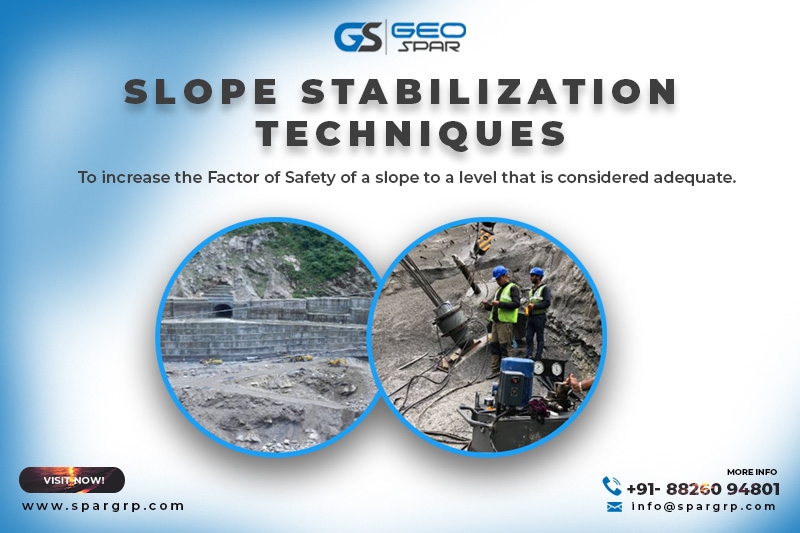
Removal and protection: Removing the unstable material that usually lies on the upper layer of the slope and placing protection, means placing of heavy nets to control the heavy strength bodies of rocks that usually fall down due to various reasons and creates unstability in the area.
Soil stabilization: Soil stabilization is a process by which a soils physical property are transformed to provide long-term permanent strength gains. Stabilization is accomplished by increasing the shear strength and the overall bearing capacity of a soil. Once stabilized, a solid monolith is formed that decreases the permeability, which in turn reduces the shrink/swell potential and harmful effects of freeze/thaw cycles. The most commonly used techniques include mechanical (compaction, dewatering, mixing, etc.) and chemical (lime, cement, fly ash, etc.) stabilization.
Support stabilization: Structural supports aim to increase the stability of the slope. Those techniques include the implementation of pre-stressed anchors, rock bolts, piles, soil nailing, geosynthetic reinforcement, retaining walls, shotcrete, high tensile meshetc
Water drainage: The presence of water in the soil or the rock mass causes increased pore water pressure. Water pressure weakens the ties between the particles and they tend to slip, a fact that reduces the stability of the slope. Drains are used to reduce water entry and control the groundwater level.
These are the methods that helps us to increase the Factor of Safety of a slope to a level that is considered adequate.
If you are also looking for slope stabilization service in India, Contact Us.